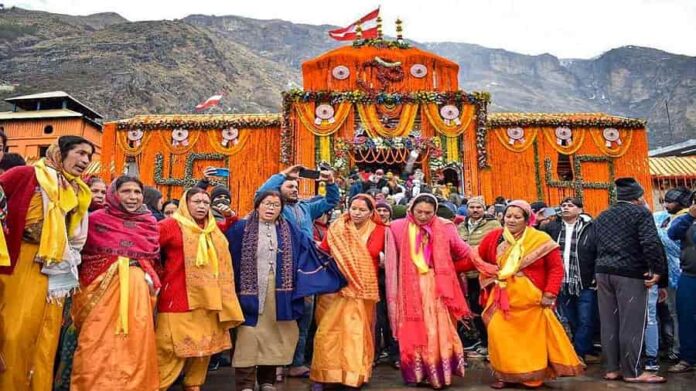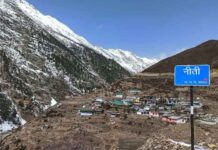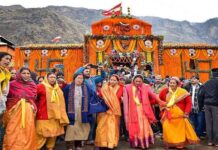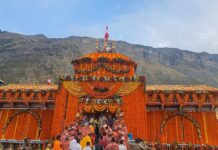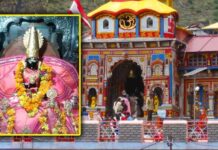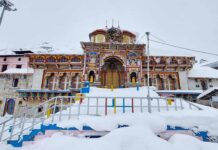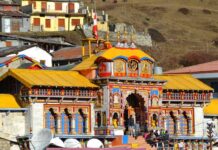In the heart of the majestic Himalayan mountains lies a sacred abode, a place of immense spiritual significance and natural beauty – the Badrinath Temple. This iconic Hindu temple, dedicated to Lord Vishnu, has a rich history, awe-inspiring architecture, and a plethora of legends associated with it. In this comprehensive guide, we will delve deep into the Badrinath Temple, exploring its location, architecture, shrines, history, literature, temple timings, entry fees, and the grand festivals that bring it to life.
General Information
| Location | Chamoli district of Uttarakhand, India |
| Altitude | Approximately 3,100 meters (10,170 feet) above sea level |
| Scenic Beauty |
|
| Deity | Lord Vishnu |
| Nearby Locations |
|
| Badrinath Temple Darshan | Darshan (viewing of the deity) is only for six months each year, from April to November, due to the challenging winter conditions. |
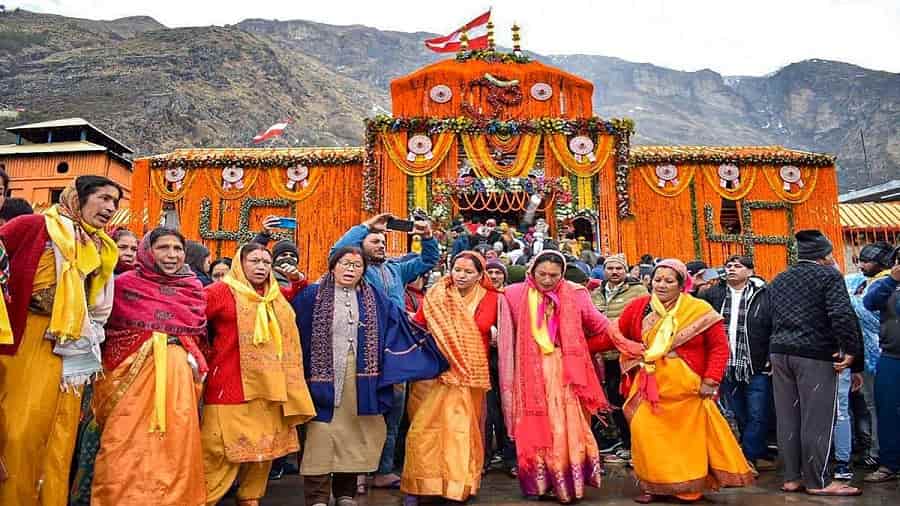
Significance
Shri Badrinath Dham is an embodiment of profound spiritual significance in Pilgrimage darshan. Devotees from far and wide embark on pilgrimages to Badrinath as it constitutes one of the four sacred Char Dham destinations. It is a very important religious place for Hindu Devotees for to following reasons-
Temple’s Divine Origin
The Temple is dedicated to Lord Vishnu as Badrinarayan. The temple’s origins are steeped in Hindu mythology, where it is believed to be the very spot where Lord Vishnu granted darshan (divine vision) to the Pandava brothers during their exile. This mythological connection lends an air of divinity to the temple, attracting pilgrims in search of blessings and spiritual awakening.
Temple’s architectural splendor
Beyond its mythological importance, the Badrinath Temple’s architectural grandeur is a sight to behold. A harmonious blend of South Indian and North Indian styles, it boasts an imposing golden spire (Shikhar) and intricate carvings that exemplify the architectural prowess of ancient India.
Temple’s Scenic Beauty
The temple’s location amidst the awe-inspiring Himalayan mountains and alongside the sacred Alaknanda River amplifies its spiritual aura.
Architecture
The temple’s architecture is a testament to the intricate craftsmanship and devotion of its builders. Here are some important highlights of the temple’s architecture-
- The primary structure of the Badrinath Temple is made of stone, with a distinct conical shape resembling a Buddhist pagoda.
- This type of architectural style is characteristic of many temples in the Garhwal region of the Himalayas.
- The temple’s exterior is adorned with intricate carvings and sculptures, depicting various deities and mythological stories.
- The main entrance features an imposing arched gateway, known as the Singh Dwara (Lion Gate), guarded by two stone lions.
- The temple’s facade is painted in vibrant colors, which stand in stark contrast to the surrounding snowy landscape.
- The sanctum sanctorum houses the presiding deity, Lord Badrinarayan (a form of Lord Vishnu), in a black stone idol that is approximately one meter tall.
- The temple also contains a sacred hot water spring called Tapt Kund, where devotees can take a ritual bath before entering the temple premises.
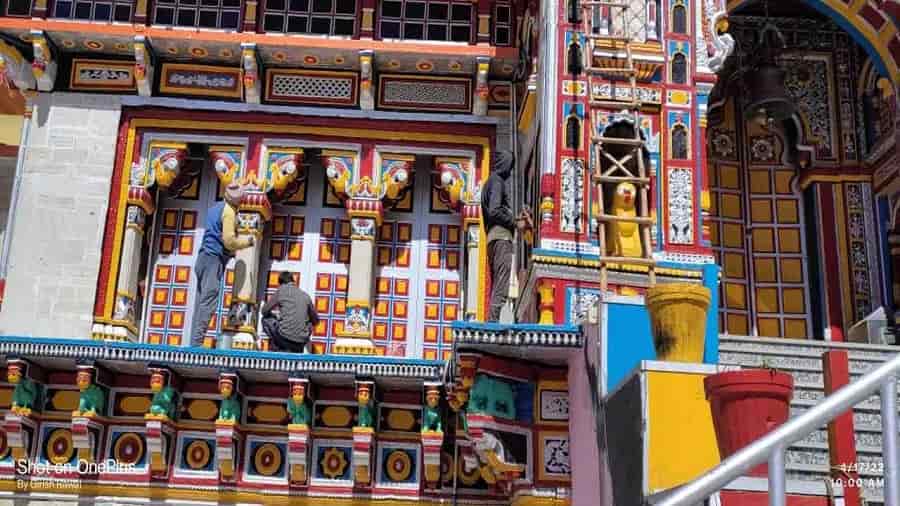
Shrines and Important Deities
Within the Badrinath Temple complex, there are several smaller shrines dedicated to various deities and figures from Hindu mythology. Some of the prominent ones include:
- Mata Murti Temple: This temple is dedicated to Mata Murti, the mother of Lord Badrinath. It is located on the banks of the Alaknanda River and holds great significance during the Mata Murti Ka Mela festival.
- Narad Kund: This is a natural thermal spring where it is believed that the sage Narada meditated. Pilgrims often take a dip in its holy waters before visiting the main temple.
- Garuda Temple: Dedicated to Garuda, the divine eagle and mount of Lord Vishnu, this temple is just outside the main temple complex.
- Tapt Kund: As mentioned earlier, Tapt Kund is a natural hot water spring with medicinal properties. It is a vital part of the pilgrimage, offering a sacred bath to devotees.
Historical Facts
- The history of the Badrinath Temple dates back over a thousand years. It is believed to have been established by Adi Shankaracharya, the great philosopher-saint, in the 8th century CE.
- Adi Shankaracharya is credited with reviving and consolidating various Hindu sects and institutions, and he played a pivotal role in propagating the worship of Lord Vishnu in this region.
- The temple has undergone several renovations and rebuilding efforts over the centuries, given its high-altitude location, which is susceptible to natural disasters such as avalanches and earthquakes.
- The present temple structure was constructed in the 16th century by the Garhwal kings, who were devout followers of Lord Badrinath.
Literature and Scriptures
The Badrinath Temple is mentioned in various ancient Hindu scriptures and texts. It finds significant mention in the Mahabharata, one of the oldest and most revered epics of Hindu mythology. According to the Mahabharata, the Pandava brothers (heroes of the epic) are said to have visited Badrinath during their pilgrimage to seek Lord Vishnu’s blessings.
Additionally, the Skanda Purana, one of the 18 Mahapuranas (ancient texts), contains detailed accounts of the temple and its significance. Devotees often read these scriptures and stories as part of their pilgrimage to Badrinath.
Pujas and Rituals Performed
- Special pujas, which can also be conducted online, are carried out on behalf of devotees at the Badrinath Temple. A sacred dip in the Tapta Kund precedes each puja.
- Morning rituals include Mahabhishek, Adhishek, Gitapath, and Bhagwat Path, while evening ceremonies encompass Geet Govind and Aarti.
Note- Devotees can make arrangements for special Badrinath pujas through the Badrinath Mandir Committee, involving a nominal fee. The procedures for these daily pujas and rituals are believed to have been established by Adi Shankaracharya. Notably, unlike many Hindu temples, all pujas, including the idol decoration, take place in the presence of the devotees, allowing for a more immersive spiritual experience.
Puja Timings
The daily rituals at the Badrivishal temple commence as early as 4:30 AM with the Maha Abhishek and Abhishek Puja, concluding around 8:30-9 PM with the Shayan Aarti. The temple opens for darshan to the general public at approximately 7-8 AM, with an afternoon recess observed from 1 PM to 4 PM. The temple’s Rawal is responsible for conducting these sacred ceremonies.
- Opening and Closing Time: 0430 AM to 01:00 PM, 04:00 PM to 09:00 PM
Entry Fee
Entry to the Badrinath Temple itself is free of charge, as is the case with most Hindu temples in India. However, there are different types of darshan (viewing of the deity) options available for devotees, some of which may involve various charges. These options can include priority darshan and special pujas, each with its associated fees.
Festivals
Badrinath Temple is not only a place of worship but also a center of vibrant festivals and celebrations that draw devotees and tourists alike. Some of the prominent festivals celebrated at the temple include:
- Mata Murti Ka Mela: This annual festival, dedicated to Mata Murti, the mother of Lord Badrinath, is celebrated with great fervor. Pilgrims take part in processions, cultural events, and special prayers during this time.
- Badri-Kedar Utsav: This festival celebrates the divine union of Lord Badrinath (Badrinath Temple) and Lord Kedarnath (Kedarnath Temple) through a colorful procession and cultural programs.
- Vasanth Panchami: This spring festival marks the official opening of the temple for the year. It is celebrated with traditional rituals and a ceremonial bath of the deity.
- Diwali: The festival of lights, Diwali, is celebrated with great enthusiasm at Badrinath Temple. The temple complex is illuminated, and special prayers are offered.
- Makar Sankranti: This winter festival marks the change of seasons and involves various cultural activities and rituals.
In conclusion, the Badrinath Temple is not just a religious site; it is a treasure trove of culture, history, and spirituality. Its remarkable architecture, serene location, and rich traditions make it a must-visit destination for anyone seeking a deep spiritual experience amidst the breathtaking Himalayan landscape. Whether you are a devout pilgrim or a curious traveler, Badrinath Temple has much to offer in terms of both inner peace and cultural immersion.
Suggested to Read:


